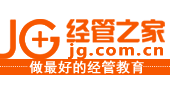[size=1.3em]THE volatility index, or VIX, is a measure of stockmarket volatility calculated using S&P 500 option prices. Investors can use options to hedge against future price movements by buying or selling shares within a specific period. Higher option prices imply higher volatility (and thus a higher VIX), as uncertain returns require higher premiums. Last week the VIX closed at 13.45 percentage points, its lowest for more than five years. Some reckon investors are being complacent or are underestimating the risks, but trading volume has also slowed, helping keep the VIX low. While all is quiet on the "fear gauge" in America, investor sentiment in Europe and Asia is more anxious. The VSTOXX (Europe's volatility gauge) and the CHIX (China's) are currently trading 60% and 35% above the VIX respectively. Premiums have risen in China as the country's economy has slowed and companies have missed earnings targets.

[size=1.3em]Correction: The original version of the text mis-stated the percentages by which the VSTOXX and the CHIX currently exceed the VIX. This was changed on August 24th 2012.

 扫码加好友,拉您进群
扫码加好友,拉您进群